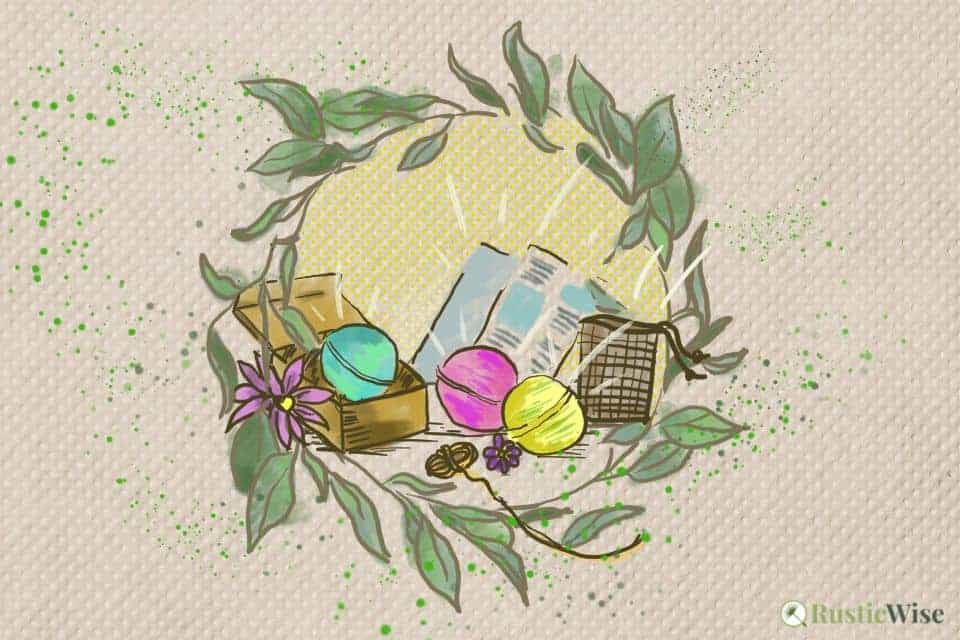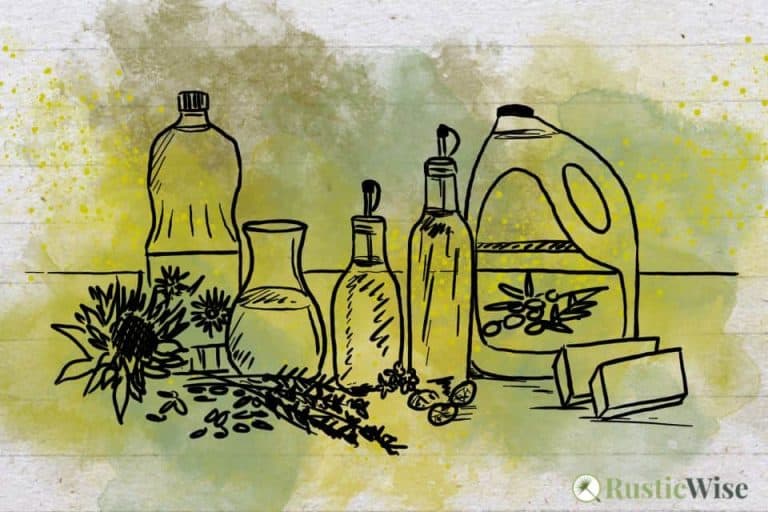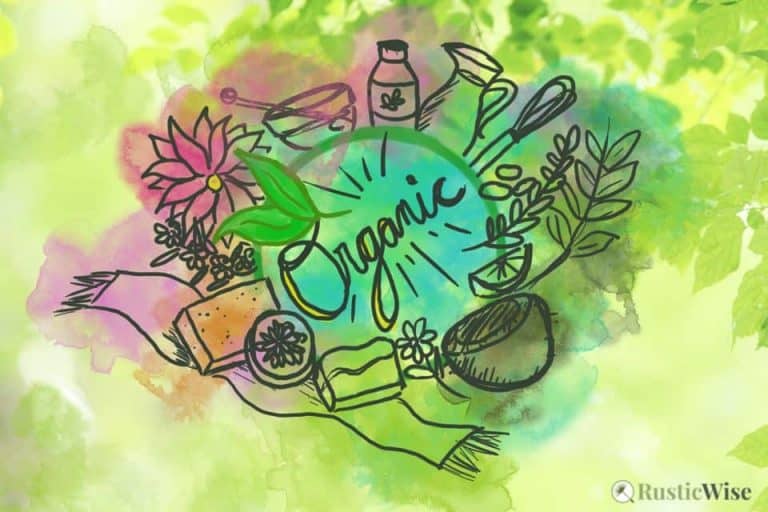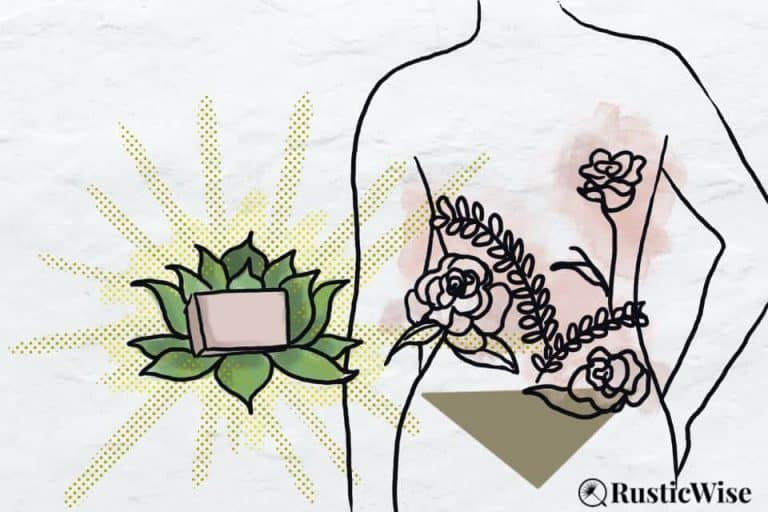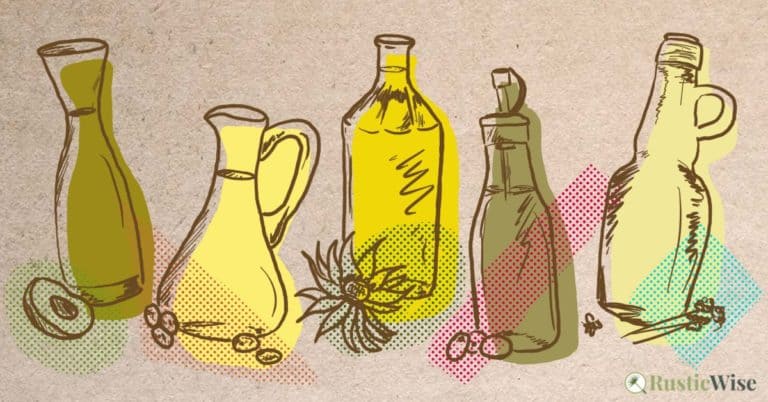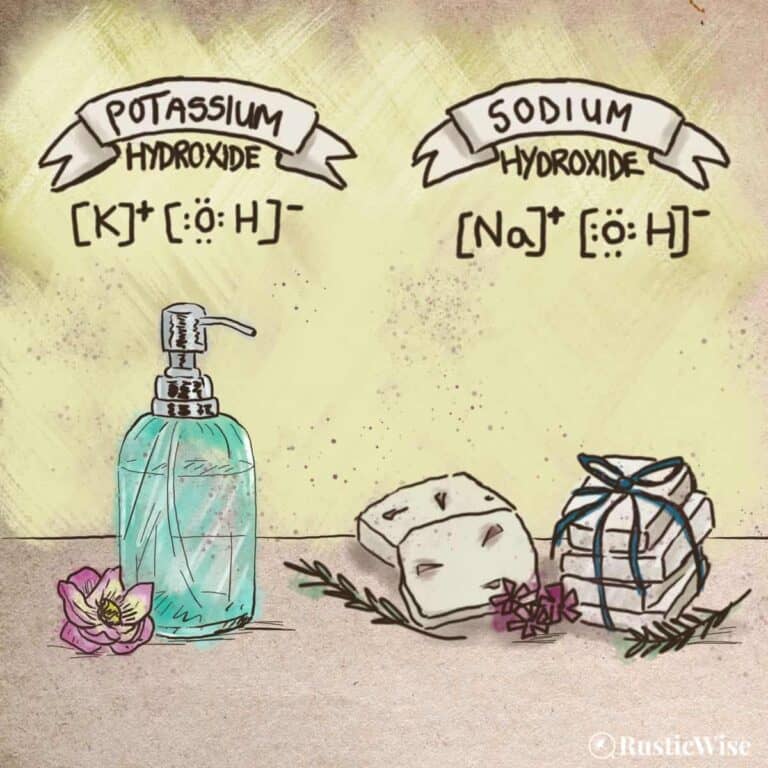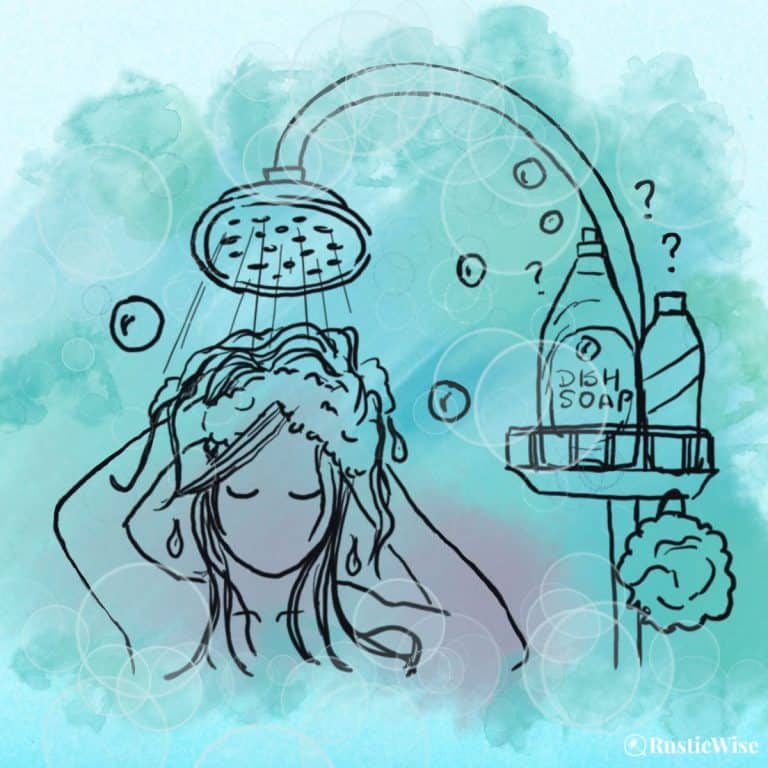16 Eco-Friendly Bath Bomb Packaging Ideas
If you don’t like the idea of wrapping your homemade bath bombs in plastic, the good news is you don’t have to. We’ve rounded up a list of 16 eco-friendly bath bomb packaging ideas that use natural or sustainable materials.
Who says you can’t be mindful of the environment AND have fun with bath bombs at the same time? Whether you’re looking for creative ways to wrap bath bombs as gifts, or looking for green packaging materials for your burgeoning business, there’s a wide range of eco-friendly packaging ideas that can suit every budget.
Let’s get started!
What’s the definition of eco-friendly?
We all have different ideas on what being “green” or eco-friendly actually means.
The Cambridge Dictionary has the following definition: “Eco-friendly products have been designed to do the least possible damage to the environment.”
I’m sure we can all agree that the best eco-friendly bath bomb packaging should do minimal harm to the environment.
When you’re brainstorming ways to package bath bombs, you might choose packaging that meets one or more of the following criteria:
- Sustainably sourced;
- Uses green energy during production;
- Biodegradable materials;
- Compostable materials; and,
- Recyclable (or made of recycled content).
The materials you choose to wrap your finished product can have an attractive design, protect against damage, AND be earth-friendly.
“Eco-friendly products have been designed to do the least possible damage to the environment.”
—Cambridge Dictionary
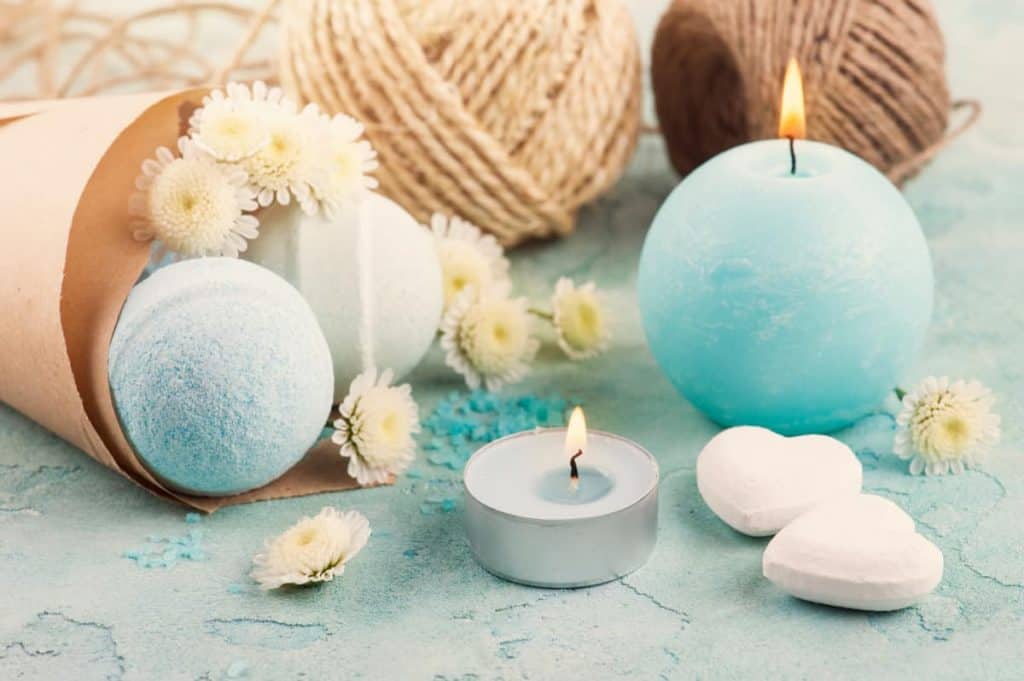
Do you really need to shrink wrap bath bombs?
No, it’s not necessary to wrap bath bombs in plastic shrink wrap. The main reason people do this is to provide a moisture barrier and to lock in any fragrances.
If you walk into any Lush store, you’ll see that their bath products, including shampoo bars, soap bars, and bath bombs are sold “naked.”
However, if you live in an especially humid environment, or are worried your product may get wet during shipping, there are some products marketed as biodegradable shrink wrap for bath bombs.
A note on biodegradable shrink wrap plastic
There’s a product called Biolefin that addresses the need for plastic, while ensuring the plastic breaks down into biomass rather than microplastic particles.¹
Biolefin is a plastic shrink wrap comprising polyethylene and, to a lesser degree, polypropylene plastics. It also contains a key additive known as Reverte™.
Regular plastic products take eons to break down mainly because long-chain polymer strands are incredibly long lasting. The special additive Reverte™ helps break down plastic into smaller pieces so that bacteria and microorganisms can have at it.
Biolefin is oxo-biodegradable, which means the product eventually breaks down into biomass and can return to the earth in a harmless form.
Most Biolefin products decompose within 5 years—light years faster than traditional plastics that can take a lifetime or more.¹
For soap and bath bomb packaging, another popular plastic product is polyolefin shrink wrap bags. These come in different sizes. Simply place your bath bomb or soap into the bag and use a heat gun to secure it tightly.
While most companies claim polyolefin is recyclable, most recycling centers don’t accept it, especially if contaminated.
The takeaway: While these plastics are more eco-friendly than their predecessors, plastic products on the market today are still made with petroleum-based chemicals.
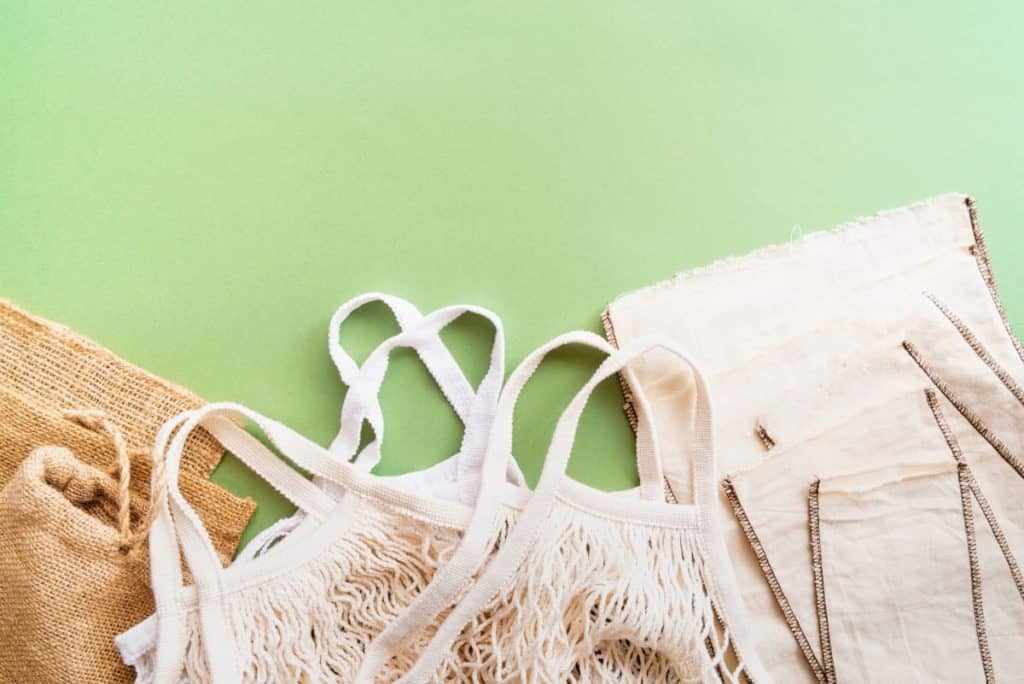
Credit: Yay Images
Considerations when packaging eco-friendly bath bombs
It’s important to select the proper packaging for bath bombs. Bath fizzies don’t withstand any type of humidity, and are easily breakable.
The right type of packaging can help preserve colors, fragrances, and the texture of your homemade BBs.
Here are some primary considerations to keep in mind when thinking of packaging solutions.
- Keep moisture out: Moisture or high humidity are the foes of any bath bomb. Bath bombs that are exposed to excess moisture can deteriorate quickly.
- Protect fragrances: Bath fizzies often contain wonderful fragrances. Depending on the type of fragrances or essential oils used, these can quickly fade if not properly sealed. You also want to prevent different fragrances from intermingling.
- Prevent breakage: If you’re planning on shipping delicate bath bombs, you’ll need to consider how to prevent breakage (because we all know bath bombs are crumbly things!).
- Cost: Some eco-friendly packaging materials cost a pretty penny, while others may cost next to nothing (think upcycled containers or materials you already have at home). If you’re planning to sell your soap, you’ll find it’s often best to buy in bulk.
- How you sell your bath bombs (individually or in groups): Will you sell individual items, or bundle bath bombs together? Paperboard or cardboard boxes work well if you’re grouping BBs.
- The look you’re trying to convey: What adjectives best describe your product? A few ideas are: natural, fun, luxurious, or elegant. Chances are, if you’re making natural or organic bath bombs, eco-friendly or low-waste packaging goes hand-in-hand.
Forget the organza bag
One of the most common ways to package bath bombs is in an organza bag. It’s pretty and convenient. Unfortunately organza isn’t an eco-friendly material.
While I love the look of organza and am not trying to rain on anyone’s parade, these bags aren’t gentle on the environment.
Most organza bags are made of nylon, a polymer plastic which isn’t considered a natural or eco-friendly material. Occasionally, you’ll find organza bags made of silk, but the production of silk often is not sustainable as it involves heavy use of natural resources and may involve the use of pesticides.²
The bottom line—organza bags don’t biodegrade easily, and are not compostable.
16 eco-friendly bath bomb packaging ideas
Nowadays, people are taking notice of packaging and design (and whether it’s gentle on the earth).
The world of environmentally friendly bath bomb and body products packaging has come a long way. Packaging can range from upcycled everyday household items to sleek custom boxes with your logo.
We’ve organized the following creative soap packaging ideas into several categories:
- Papers
- Boxes
- Bags
- Fabrics
- Other ideas
Papers for packaging bath bombs
When looking for types of paper products, check for a FSC label or certification. This stands for Forest Stewardship Council® (FSC®) which means wood pulp is sustainably sourced.
In a nutshell, here’s how to wrap an individual bath bomb with paper:
- Cut a square of paper that easily accommodates the size of the bath bomb.
- Place the bath bomb in the center of the paper.
- Gather opposing sides of the paper. Arrange it so that the bath bomb is completely wrapped.
- Secure the paper using either a sticker, tape, or a string/ribbon.
- You can choose to trim the excess paper at the top for a “neat” look, or leave the paper for a decorative touch.
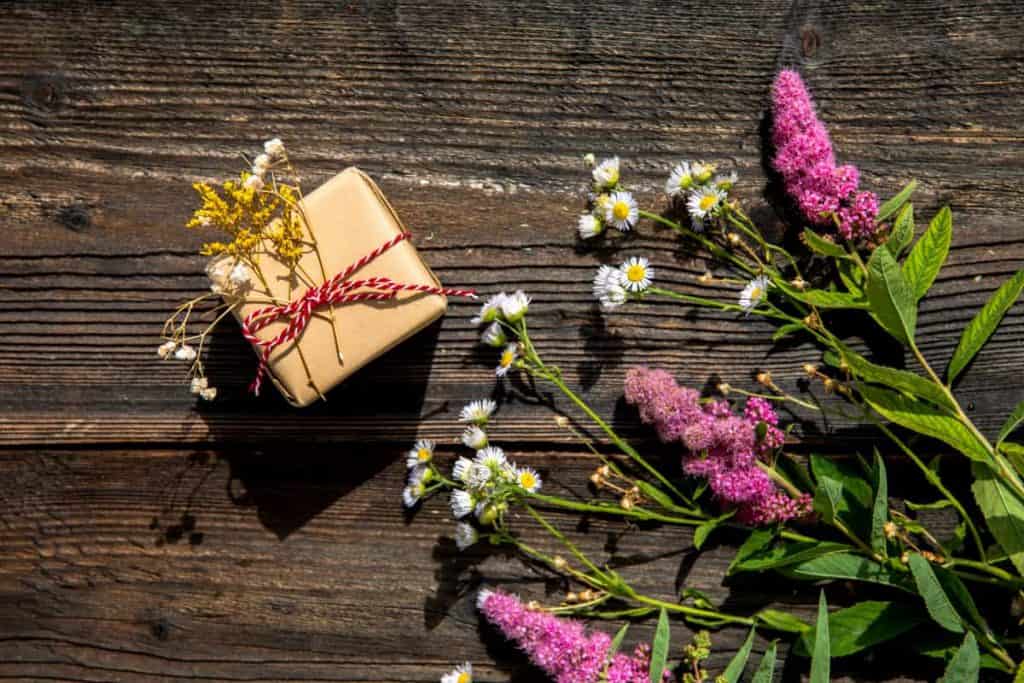
Credit: Vector State
1. Kraft paper
The original “green” solution, kraft paper is an affordable way to package your products. It gets its distinct brown coloring from wood pulp, which comprises the bulk of its materials.
It’s easy to see why so many people love brown kraft paper. The natural and understated aesthetic complements pretty much any design. Brown kraft paper is affordable, biodegradable, compostable, recyclable, and can be reused. Plus, it contains no added dyes.
2. Parchment paper
Something you may already have in your kitchen, parchment paper (aka baking paper) provides a grease-proof layer of protection.
(Parchment is also great for regular soap bars and lotion bars, too).
Look for unbleached parchment paper that’s gentler on the environment.
While most parchment papers are biodegradable, they’re often not recyclable if contaminated.
Parchment paper is coated in silicone, so it’s probably not something you want to throw into the compost pile!
3. Tissue paper
Try wrapping your bomb in tissue paper. For a fuller look, you can try layering tissue paper together. You can also get creative by layering different colors together.
Choose eco-friendly tissue paper products made from recycled materials sourced from sustainable forests. For custom printing with your logo, try to find an eco-friendly company that uses plant-based, or water-based inks rather than traditional petroleum-based inks.
Many types of tissue paper are recyclable and some are also compostable. Types of tissue paper that are NOT compostable are those with glitter, metallic or plastic finishes, or other synthetic add-ins.
Tip: Some colored tissue papers may “bleed” onto bath bombs. Use caution when wrapping white or light-colored BBs.
4. Recycled gift wrap paper
What could make your BB more gift-ready than wrapping paper?
There are so many colors and patterns available. To make your gift wrap as earth-friendly as possible, try to select papers made of recycled materials.
Many types of wrapping papers are recyclable and compostable. Some may be suitable for the recycle or compost bin so long as they don’t have a metallic, glossy, or waxy finish. Ditto for glitter or sparkles.
5. Upcycled pages from magazines or newspapers
Put those old newspapers and dog-eared magazines to good use as wrapping paper. Most magazine pages are just the right size for a single bath bomb.
Look for pages with interesting pictures, colors, or textures.
In our household, we save all the comics pages from previously read newspapers as gift wrap!
6. Tin foil
Probably the easiest way to wrap a spherical object such as a BB, aluminum foil, or tin foil conforms perfectly to curves. The best part is no tape required!
So long as tin foil isn’t contaminated, you can scrunch it up into a ball and recycle it.
7. Crepe paper or crepe ribbon
If you have a roll of leftover crepe ribbon or paper from a party, it also doubles as a bath bomb wrapper.
To use crepe ribbon, cut four to six sections of equal length. Arrange the pieces into an asterisk pattern (*) so that the centers overlap. Place the bath bomb in the center and tie or tape the pieces together.
Many recycling programs accept crepe paper that’s free of glitter or foil. Crepe paper made with natural colorants are also compostable.
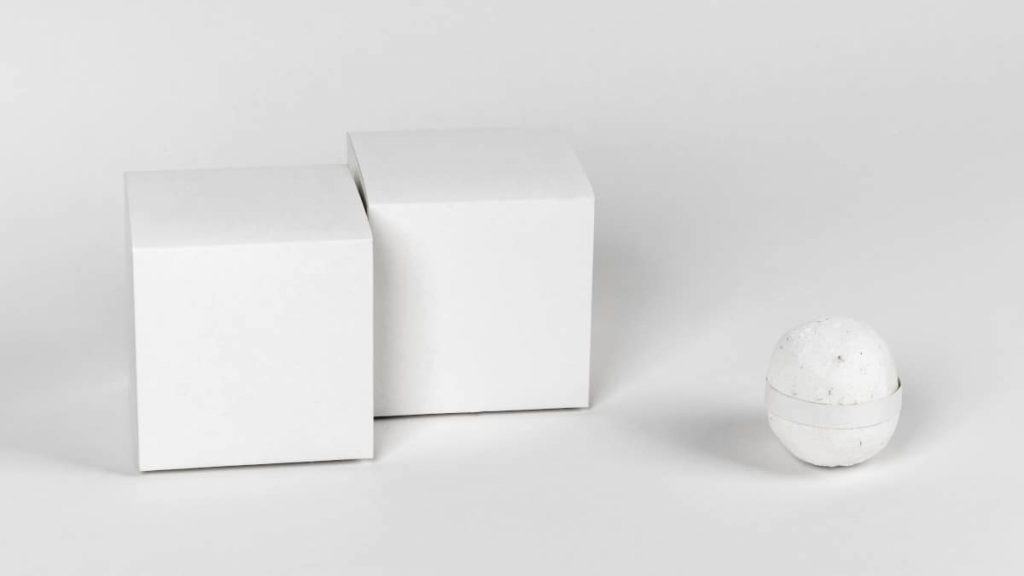
Credit: Yay Images
Boxes for bath bombs
Boxes are a great eco-friendly packaging choice, as they are recyclable and sometimes compostable. The main consideration when deciding on a box is whether you’re wrapping an individual BB or making a gift package with multiple items.
You can use a variety of eco-friendly products to embellish and protect your BBs:
- Recycled shredded newspaper
- Shredded wood excelsior
- Crinkle paper
8. Individual paperboard or cardboard boxes
Bath bomb boxes come in all shapes and sizes. Some also have cutout windows that let you peek (and sniff) the item.
Look for paper boxes made of recycled contents that are unbleached.
Many kinds of unbleached cardboard are recyclable and compostable (so long as they don’t have a plastic or waxy lining).
9. Large bath bomb display boxes
If you’re planning on selling bundles of BBs, you’ll find a variety of sizes to choose from. Some slide open, while others have a flip top lid.
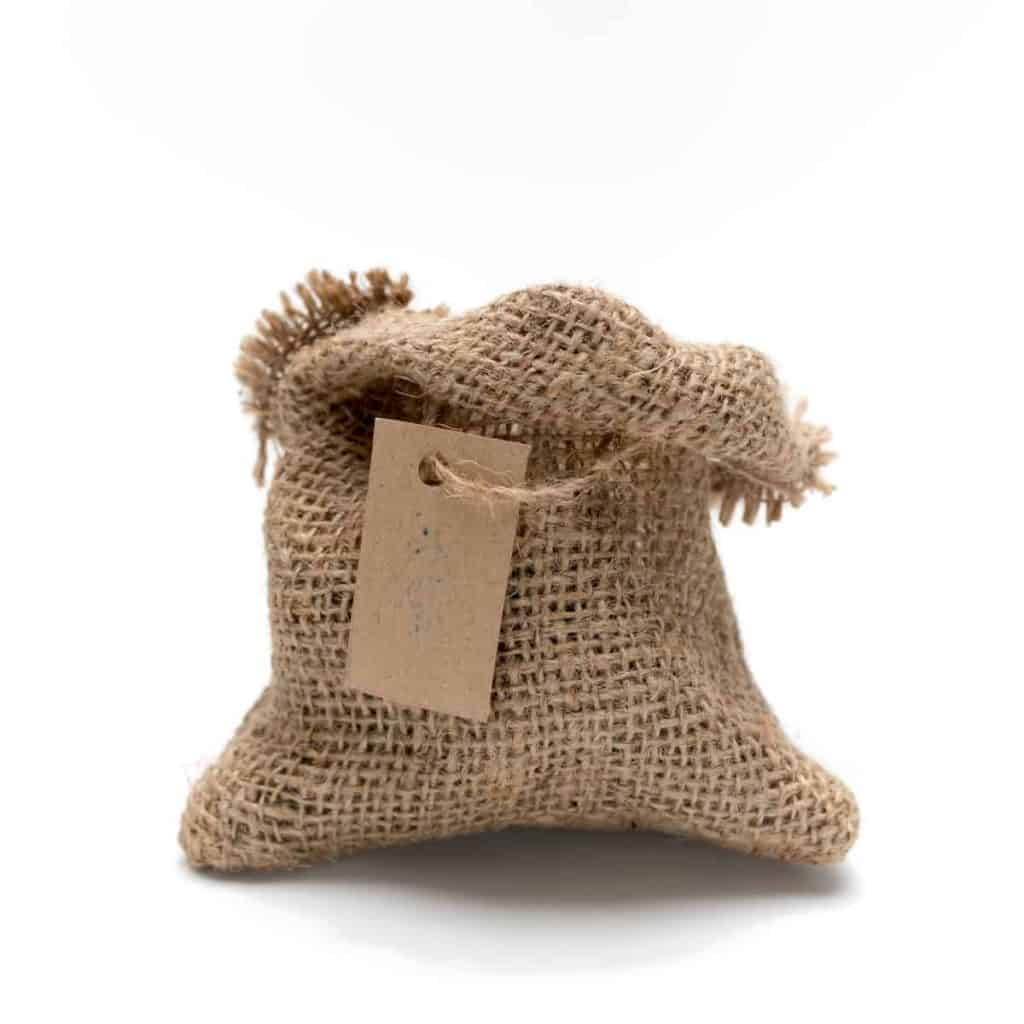
Credit: Yay Images
Bags
What could be easier than slipping a BB into a small pouch? Most fabric bags come with a drawstring, making it easy to secure. You can seal paper bags with tape, string, or glue.
Aim for fabrics that are natural and sustainable. The great thing about fabric bags is that they provide beautiful packaging that’s easy to reuse.
10. Burlap bags
Burlap is a natural fiber made from hemp, jute, or flax yarn.³
Look for organic burlap that’s pesticide-free. Burlap not only adds a lovely rustic touch, it’s often sustainable, vegan, and biodegradable.
11. Muslin bags
Muslin is a lightweight fabric made of either with synthetic polyester (or poly blends), OR woven cotton. For the most “green” option, choose cotton muslin.³
Cotton muslin bags are biodegradable (however, polyester versions are not).
12. Glassine bags
While glassine paper looks remarkably similar to wax paper, it’s different. It’s a translucent semi-glossy and smooth paper that’s food-safe, grease-proof, and good at keeping moisture at bay.
Glassine gets its shiny look through a process called supercalendering. This involves pressing and drying the paper. Manufacturers then feed the paper through special cylinders which flatten the paper fibers so that they’re all facing the same direction. This gives it a glossy sheen.⁴
Unlike wax paper, it doesn’t contain any wax additives. This makes glassine compostable, recyclable, and biodegradable.
You can also customize glassine with your custom logo.
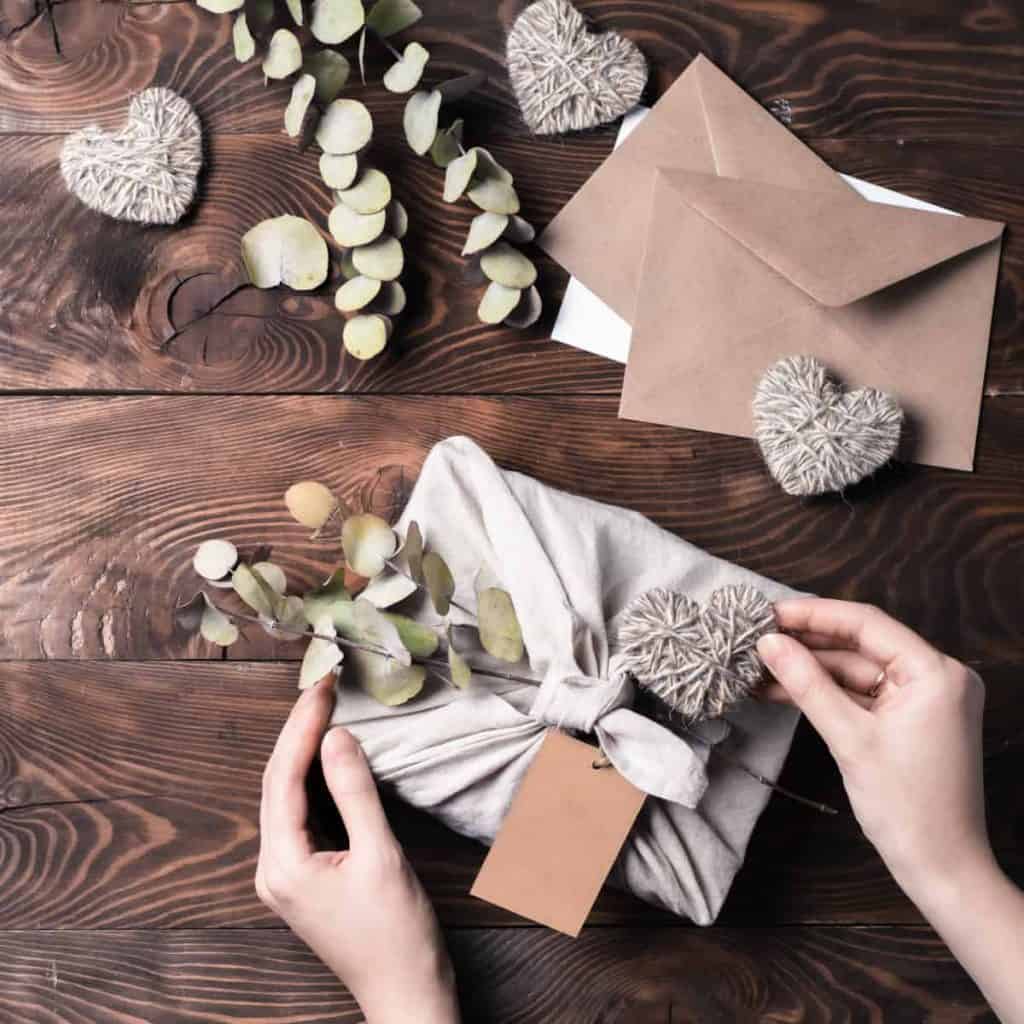
Fabric
Fabric squares are a great green packaging option if you’re looking to add a unique look. Choose natural fabrics such as the ones listed above (muslin, burlap), or hemp.
13. The art of Furoshiki
The Japanese art of gift wrapping with reusable fabric is called Furoshiki. Traditionally, people used square pieces of colorful fabric. But you can get creative, and upcycle scrap fabrics you have around the house.
Simply tie knots on opposite ends to create an eye-catching gift.
Other creative ideas
14. Bath bomb belly bands
Belly bands, or sleeves, are an affordable and eco-friendly way to package your BBs. They’re also easily customizable. These thin strips of paperboard fit around the middle of each BB allowing customers to see and smell the product.
You can find a variety of downloadable and customizable templates for belly bands on Etsy which allows you to print your own at home.
Or you could also order pre-made or blank bands.
Look for bands made of recycled materials. Most soap bands are recyclable, biodegradable, and compostable (as long as they don’t have a waxy or plastic finish).
15. Coffee filters
I love the concept of using what you already have, and most of us have a few paper coffee filters around the house. If you have unbleached coffee filters, even better!
Simply place your soap in a coffee filter and secure together with jute or string.
Coffee filters are biodegradable and unbleached varieties are compostable.
16. Naked bath bombs
Probably the most eco-friendly packaging is no packaging at all! If a large company like Lush can sell “naked” bath products, maybe it’s worth a try!
This method works if you’re selling at a farmers’ market, for example, so customers could see and smell the BB.
Just be careful of different scents mingling together.
Types of string
And of course, we’ll need something to keep your packaging together. While tape or stickers work, it’s not the most green option.
A few natural string options include:
- Natural twine (or hemp twine);
- Raffia which is lightweight and made of natural veggie fibers; and
- Sisal, a natural, sustainable, and strong fiber
New to making soap? 🧼❓
👉We have a fantastic overview on the whole soapmaking process here: read our Timeless Guide To Soapmaking.
If you would like to see our soapmaking posts organized by topic type, see our Soapmaking Collection.

References
- Reef Repair, Biolefin · 100% Biodegradable Plastic Shrink Wrap, https://www.reefrepair.com/education/environment/biolefin/. Accessed February 2022.
- Healabel, Organza, https://healabel.com/o-fabrics-materials-textiles/organza. Accessed February 2022.
- Stanfield, Savanna (27 May 2021). “Is Muslin Eco Friendly? Facts You Should Know (+3 Alternatives),” Citizen Sustainable. Accessed February 2022.
- The Packaging Company, Waxed Bags vs Glassine Bags: What’s the Difference?, https://www.thepackagingcompany.com/knowledge-sharing/waxed-bags-vs-glassine-bags-whats-the-difference/. Accessed February 2022.

Author: Theresa Tesolin
Theresa is co-founder of RusticWise. She helps people unleash their inner DIY spirit by encouraging them to get dirty and make or grow something from scratch.

